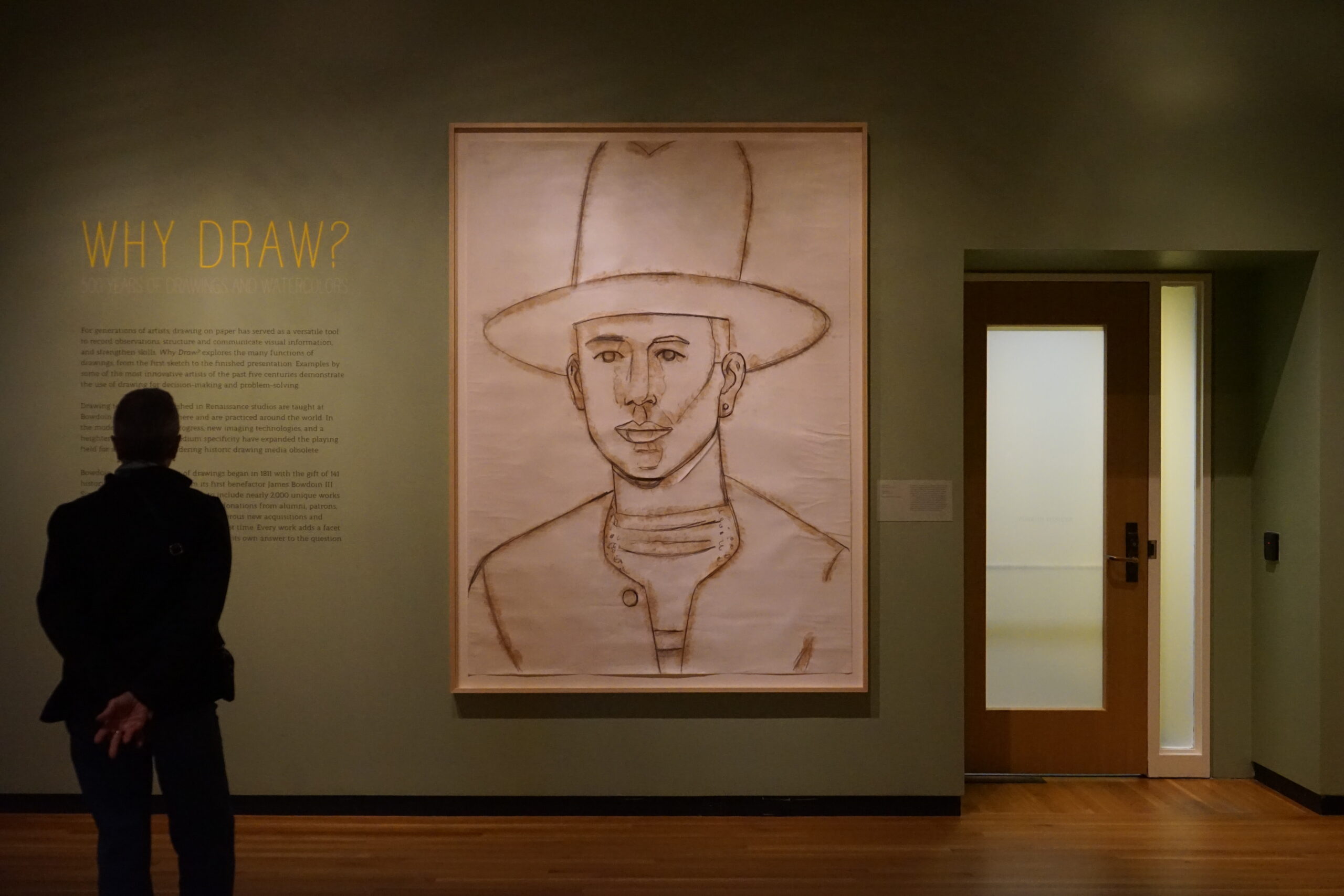New Museum of Art exhibition celebrates 500 years of drawing, watercolor and collage
May 5, 2017
 Meghan Parsons
Meghan ParsonsThe first image visitors see when they enter the Bowdoin College Museum of Art’s newest exhibition, “Why Draw? 500 Years of Drawings and Watercolor,” is a seven-foot-tall portrait of pop culture icon Pharrell Williams, created with techniques that date back to the Renaissance-era drawings that are displayed alongside it.
This pairing is just one example of how the new exhibition juxtaposes old and new in order to bring a contemporary perspective to the Museum’s oldest works of art.
According to Museum Co-Director Anne Goodyear, the portrait of Williams—created by figurative artist Alex Katz—sets the tone for the entire exhibition, which opened on Tuesday afternoon.
The exhibition consists of a selection of 150 drawings arranged in chronological order and encompassing a variety of media including crayon, charcoal, pastel, graphite, ink, watercolor and collage. Goodyear said the exhibition poses the question ‘‘Why Draw?’’ but also questions what constitutes a drawing.
“We believe that each drawing that’s on view here gives a slightly different and interesting answer to the question, ‘Why draw?’ That’s the idea,” added Museum Curator Joachim Homann.
According to Goodyear and Homann, framing the exhibit in terms of the question ‘Why Draw?’ allows more freedom for individual interpretation.
“It’s just an opportunity to reexamine our own assumptions and maybe even to think about why we ourselves might choose to draw, what we might choose to draw, what we might find important about drawing itself,” said Goodyear.
Unlike many of the Museum’s summer shows, ‘Why Draw?’ is entirely comprised of works from the Museum’s own collection, including recent acquisitions and promised gifts. It features many of the master drawings that James Bowdoin III donated to the College upon his death in 1811—a donation that represents both the start of the College’s art collection and the first public collection of drawings in the United States.
“There’s a way in which drawing has been at the heart of this institution for well over 200 years,” said Goodyear. “What we really hope is that this exhibition will help people to understand what an exceptional collection we do have and will inspire them to become even more deeply involved with the Museum and inspired to take advantage of our holdings more broadly.”
The opening of the show was celebrated with a reception at the Museum on Tuesday evening, following a lecture by acclaimed artist Natalie Frank, whose feminist recreation of the Brothers Grimm fairy tale “The Maiden Without Hands” is featured in the exhibition.
Frank was inspired by the origin of the Grimm tales as women’s oral tales, which were collected by the Grimm brothers from women throughout Germany.
“Fundamentally, these were women’s tales that were passed down through the generations. So they represented women’s anxieties, fears, desires, things that they couldn’t necessarily speak out loud because of controls of the church and the state,” said Frank.
To the museum’s co-directors, Frank’s art provides a framework through which to think about the history of the practice of drawing and contributes to the interplay of past and present that they hope to lay bare in the exhibition.
“Feminism, while it may seem to be a political discourse, also profoundly affects how we understand the art world itself, and you’ll find many fewer women earlier in the show,” said Goodyear. “So, we actually begin to even watch this arc by which women and other sorts of artists begin to come into the larger discourse.”
Will Schweller ’17, who assisted Homann in curating the exhibit, said that he gained a new appreciation for the richness of the Museum’s collection.
“I’ve been coming here for four years now, and I had no idea the majority of these pieces were in the collection,” said Schweller. “So that’s been really exciting to be able to work with, and I’m really looking forward to presenting it to fellow students and the community at large.”

Comments
Before submitting a comment, please review our comment policy. Some key points from the policy: